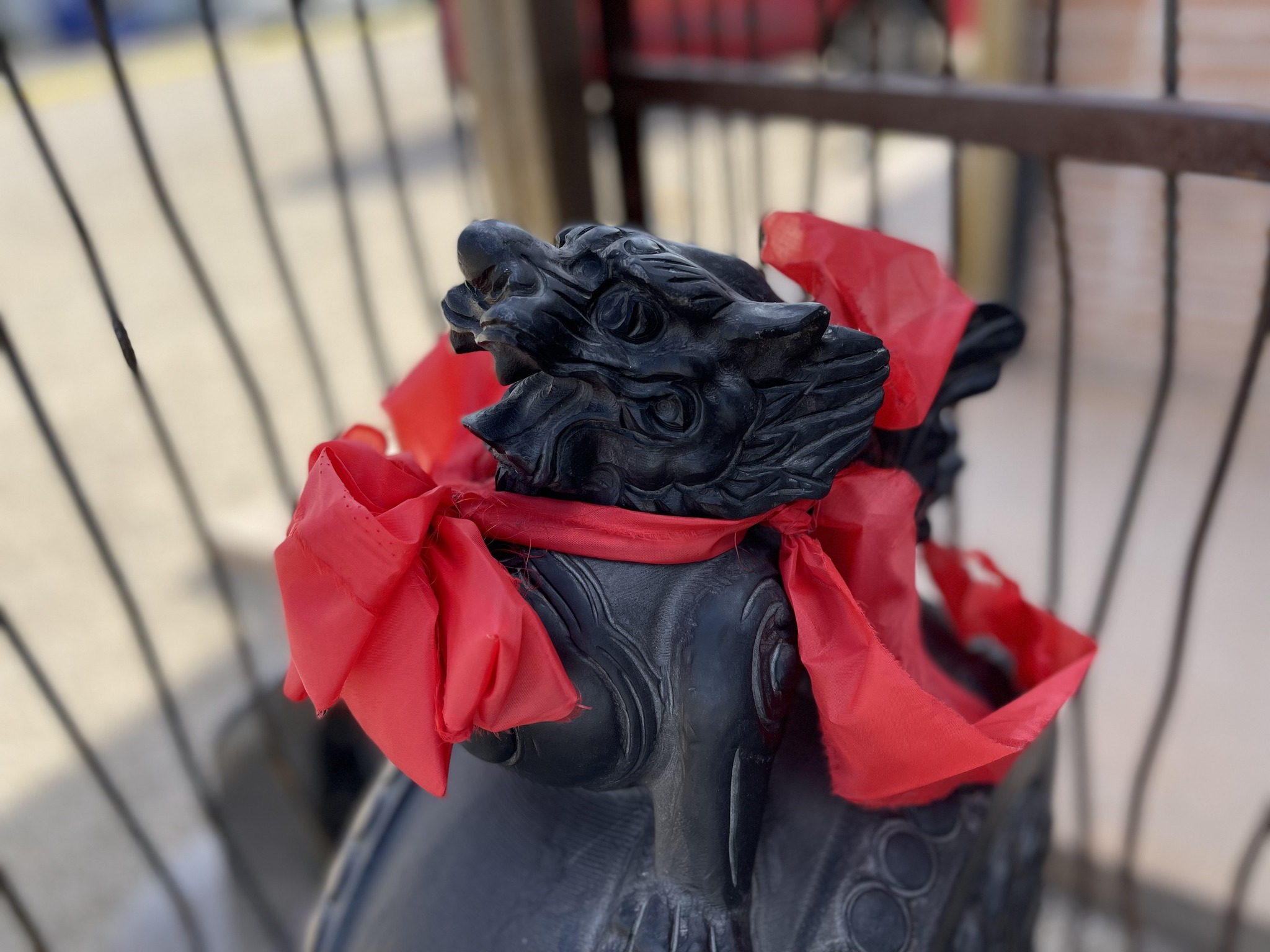Andrew McNeill, Business Development Director at Seven Cups Fine Chinese Tea, says that stay-at-home tea drinkers exploring specialty teas are eager to share the experience of tea discovery face-to-face. In December, the 20-year-old tea merchant and tea house relocated to a 2200 sq. ft. combination tea shop, tearoom, warehouse, and online fulfillment center.
Caption: Kai Steerman, left, enjoys a tasting led by Zhuping Hodge
Listen to the Interview
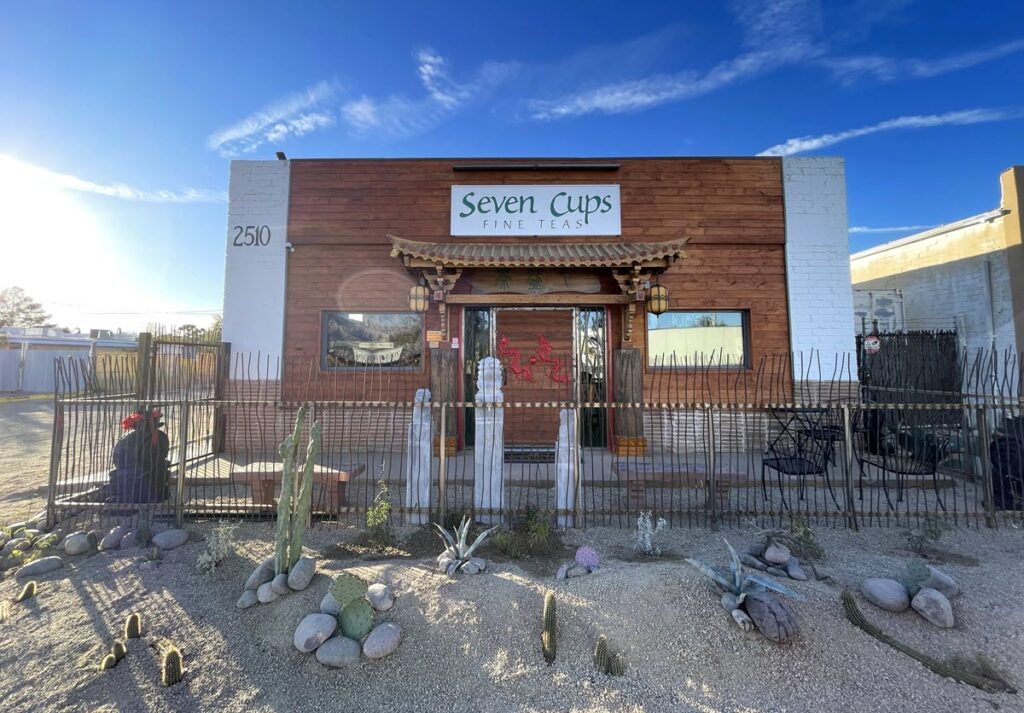
Seven Cups Tea House Carefully Crafts a Cultural Experience
Seven Cups Fine Chinese Tea is typical of well-established shops that survived the pandemic. The direct-trade retailer is 20 years old, located in a second-tier city, and generates revenue online and in-store from packaged sales, tea service, and wholesale supply to coffee shops, cafes, hotels, and restaurants.
Packaged tea has fared well since 2019. A spike in sales has jammed tea cupboards with direct-from-origin and exotic teas purchased online. The growing consumer preference for better-tasting tea favors retailers with quality selections, including herbal infusions. Retailers are remodeling to promote in-shop sampling as it encourages social interaction and repeat business among enthusiasts eager to explore new origins and styles as they learn from experts.
Seven Cups founder Austin Hodge says, “The business model of our tea house has always been to provide an authentic and high quality product and customer experience. We see the opportunity to expand our tea house is a validation of this model. We firmly believe that high quality tea isn’t just compelling to a niche market of connoisseurs, it’s readily enjoyed by everyday, working class people.”
“When you enter a traditional teahouse, in China or Tucson, you step into a cultural experience that separates you from your daily problems. It’s a teahouse tradition for tea drinkers to be treated with respect and dignity, whatever their outside problems might be,” says Hodge.
Dan Bolton: Every successful retailer has plans to expand to a new 2200 sq. ft. location. What led Seven Cups to relocate?
Andrew McNeill: So, for us, it was realizing that we were hitting a point where we were at capacity. We realized about five years ago that we had to start making a plan. We were sharing a strip mall with several other popular businesses, and it’s great to have the exposure to being next to other popular businesses. But if people can’t park there, it’s a problem. And being there for 20 years, we realized that if people hadn’t found us yet, in this location, they probably weren’t gonna find us.
We were fortunate in that we had enough of a unique draw in our local area, where people sought us out from far away. We weren’t dependent on foot traffic to drive business and awareness. But that said, after moving to a location with better visibility, we’ve already seen an enormous response.
You can do everything right with your social media, tending to your tribe, and getting the word out in your community; these are all great and worthy things to do. But finding the right location that’s going to be visible and accessible to your customers can’t be substituted.
So, location still does matter.
Dan: Did you decide to buy or lease?
Andrew: We moved from being a renter to a buyer. And, of course, the advantages of being a renter versus an owner will depend on where a business operates. In our case in Tucson, we saw pretty strong advantages to being an owner, especially with rents increasing; given the economic climate in the last three years, it was clear at the time. Things are shifting now, as they always are, but it was time to move in terms of favorable lending conditions and property valuations.
That said, we spent a long time finding this place. It was a unicorn location. We knew we were looking for something unusual. In our case, a big part of what we wanted was to consolidate the wholesale and online fulfillment with the tea house. There are obvious advantages and efficiencies in getting your operation under one roof. The challenge there, of course, is that there are very few tea house-restaurant-retail spaces and slash warehouse-office spaces in one building. You must build to suit, to create something like that.
Ultimately, the property that Austin found was an off-market building, a market space that had been abandoned since the 80s. It was not listed. Our realtor did us a real favor by proposing an offer to the owners.
Starting negotiations that way, we were fortunate to find a space that could be reshaped into exactly what we needed.
Dan: COVID created new consumer behaviors leading shops to adapt. Your business does an amazing job educating customers and introducing them to suppliers and producing regions. Will you talk briefly about how this new shop accommodates online buyers and how you approach teaching with sampling?
Andrew: I think we’re still in the midst of that change. During COVID, we’ve accumulated a lot of stuff. And our consumer experiences have been focused on the home and consumption in the home, the individual, and the family.
And so we’ve gone from buying stuff to buying experiences. When you’re building out a retail space, it’s very important to focus on the experience and the experience of the product. This is something that, for us, historically, has been the case in our tea room, in the decades past, is been only a small part of our business, but it’s been an integral part of our business. Because what it is and what it provides is that experience, it’s a guided experience in an environment conducive to it.
When people experience the possibility of what tea can taste like and what satisfaction it can provide when brewed with intentional and beautiful surroundings, this ultimately drives a whole customer lifecycle that we wouldn’t have otherwise.
Regarding parts of our business, the tearoom is just about 10 or 15% of revenue. So, it’s not a significant part. But the marketing power of providing this experience for folks, that face-to-face interaction with your customer, and the feedback given back to us as a business is invaluable.
We certainly missed that during COVID. And we’ve seen that people coming out of the pandemic haze are interested in having that interaction from the consumer side. So, we’re happy to be in the fortunate position of opening a new Tea House experience when people are just becoming more comfortable coming out and seeking such experiences. Of course, it’s got to be great; it’s got to satisfy those expectations both in terms of the educational experience and the sensory experience.
Dan: Tell us about the tasting experience.
Andrew: Tasting is a central part of the experience; there’s a tearoom, but there are also individual tasting tables. So, these tables are not a place where people would sit down with their own tea, but where they would sit down with the shop owners or some of the staff to have a conversation and chat about tea. And, of course, that conversation is an organic educational experience where people can come up with their own questions. That drives the discussions and the whole experience of tasting this tea and understanding what’s behind it. Of course, it helps us that education flows the other way because we understand how consumers enjoy this tea. We’ve built out places in the new store for people to have those conversations in different parts of the building.
Dan: How many tasting tables are there in the store?
Andrew: So we have three different tea tables. The tea room itself is about 700 square feet, which is about the same as we had in our old space. The added space gives us a little more flexibility on where we placed the retail section of the business. In the old store retail sort of ran through the tea room, so you could be having your tea experience in the tea room and people would be walking in back of you along the walls looking at teapots. Here it’s a little more of a private experience. There’s a clear separation between the retail area, which takes up about 500 sq. ft. and the tea room. And so people feel a little more comfortable with getting up close and personal with teapots and jars of tea, while having conversations with our staff over the retail items.
Simultaneously it makes the tea experience when you’re sitting down all that more special and private and focused.
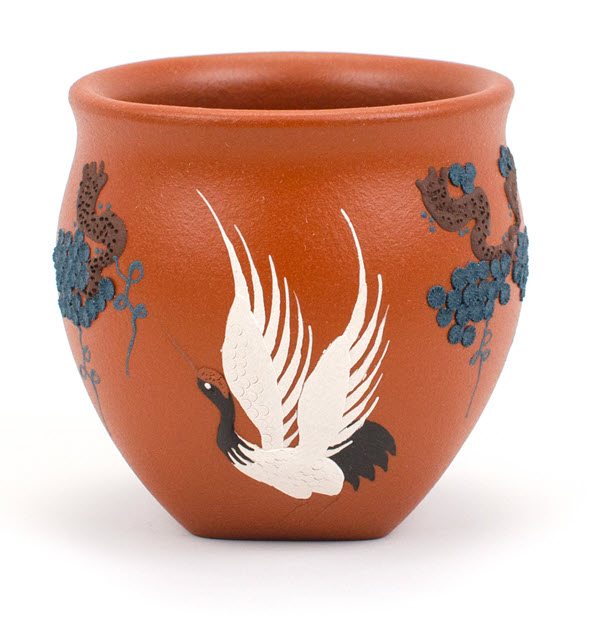
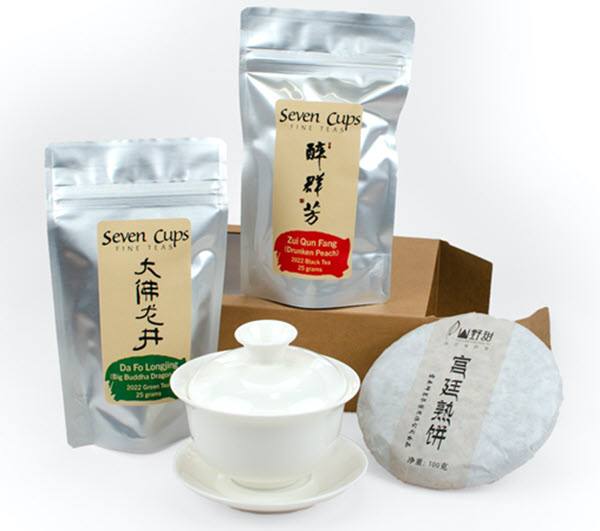
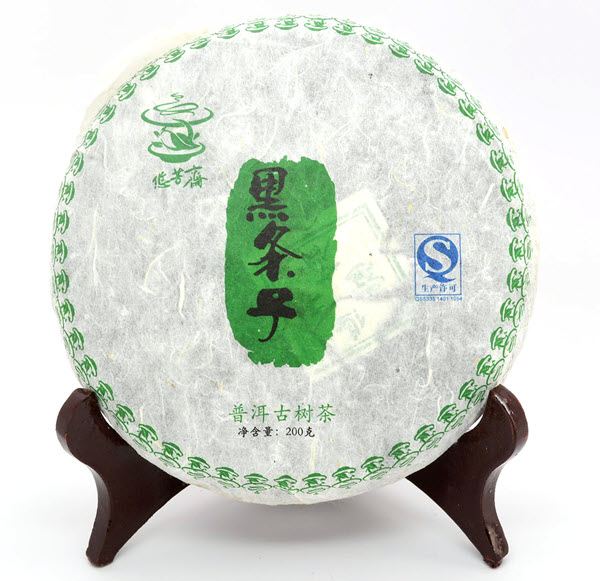
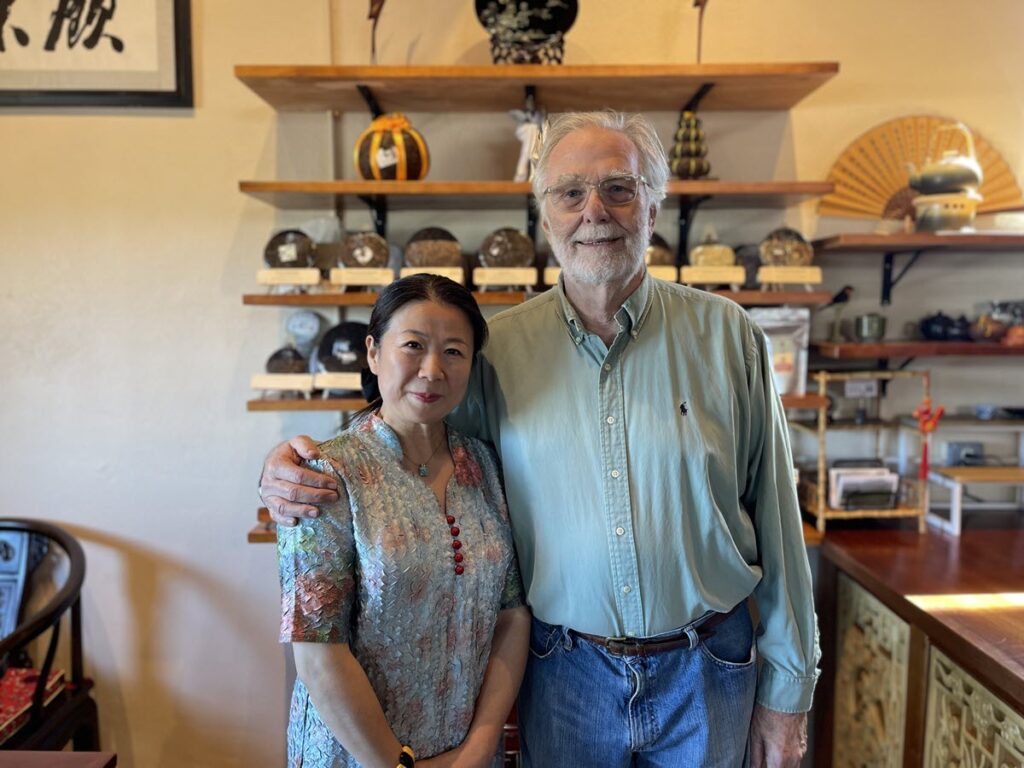
suppliers and partners to share with customers the finest and freshest Chinese tea with the world
“People want to have an intentional, amazing, profound experience every time. If you create that brush with the sublime with your products, service, and relationship with your customer, you’re really in tune with what folks want.”
— Andrew McNeill
Dan: Let’s talk about innovations in the back end of the store.
Andrew: Wholesale is not the profit leader of our business. It comes along with online retail, the tea house, part of a broad revenue mix. So, for us, that makes consolidation more important because we’re all serving multiple roles. You can have conversations not only with different people but with different people as they’re serving different roles. It is also very valuable in terms of efficiencies for building out the wholesale part. A free-standing building enabled us to build the ventilation and cooling system to suit tea storage. It’s of utmost importance to take care and preserve the quality of the tea from season to season. We’re a vendor that focuses on one lot per year. We do not blend 2021 tea with teas from 2022. Selling is seasonal, dated by year, so you must ensure the tea is holding up. As tea ages, people are going to know that it’s aging. We make sure that we’re doing our best to preserve its quality. A freestanding building also means there are no intrusions of smells that will contaminate, there’s no flavor creep from, say, other products that are around. It also gives us the advantage in terms of compliance to have one FDA-inspected facility instead of two, same for health department inspections locally. Being able to focus on getting things just right was one of our build-to-suit goals
Dan: Online you offer an interesting version of sampling option.
Andrew: As fresh tea arrives; we offer graded samplers. This is an experiential product. This year we did five different grades of Longjing (Dragon Well) from the same factory. These teas are grown in the same garden, harvested during the same season, and processed by the same tea maker. You can taste the differences from the earliest pluck of their premiere, early spring Ji Pin (ultra grade) Da Fo Longjing (2022), and compare as the season progresses, tasting how the leaf changes and how differences in plucking and processing change as the harvest progresses. You can brew each tea separately for casual drinking or compare different teas side by side to calibrate your taste buds.
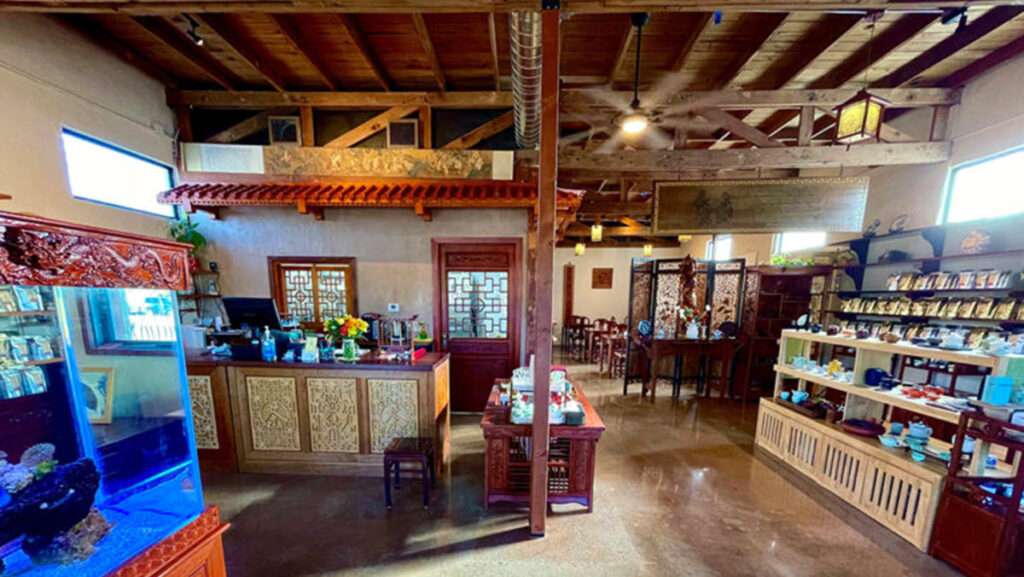
Dan: Younger people coming to tea are seeking distinctive taste. I tell people it’s as simple as this; your grandmother drinks tea — her grandsons and daughters taste tea. She seeks consistency in a brand that spans 50 years of her life. Her grandchildren are looking for something novel, identifying flavor notes and asking, where was it grown? How was this tea made? Why does it taste this way?
Andrew: Yeah, they are looking for an experience every time. I think that’s an excellent way of putting it and describing the generational shift. Many younger consumers are not drinking a whole lot of tea. We have a subscription service, and people said, “this is great, my only complaint is I’m getting too much tea.’
People want to have an intentional, amazing, profound experience every time. If you create that brush with the sublime with your products, service, and relationship with your customer, then you’re really in tune with what folks want.
There’s a sophistication with the consumer now since people can learn so much so fast about the supply chain. They will ask those questions to satisfy their own moral, philosophical demands for an ethically managed supply chain, but also to satisfy the sort of epicurean desires of being able to taste the terroir, the provenance of this product.
With people coming in who have a high degree of knowledge, what they’re looking for is not only answers to those questions but a conversation around those questions. So it’s not just being able to provide that information but being able to have a conversation around that information.
Because people are used to having this conversation, say on social media and over long distances over the internet, and getting this information directly from growers when they come into their local tea shop, they want to be able to continue sharing their own preferences and learn more about your own sourcing approach and just delighting in a conversation about something that both of you love.

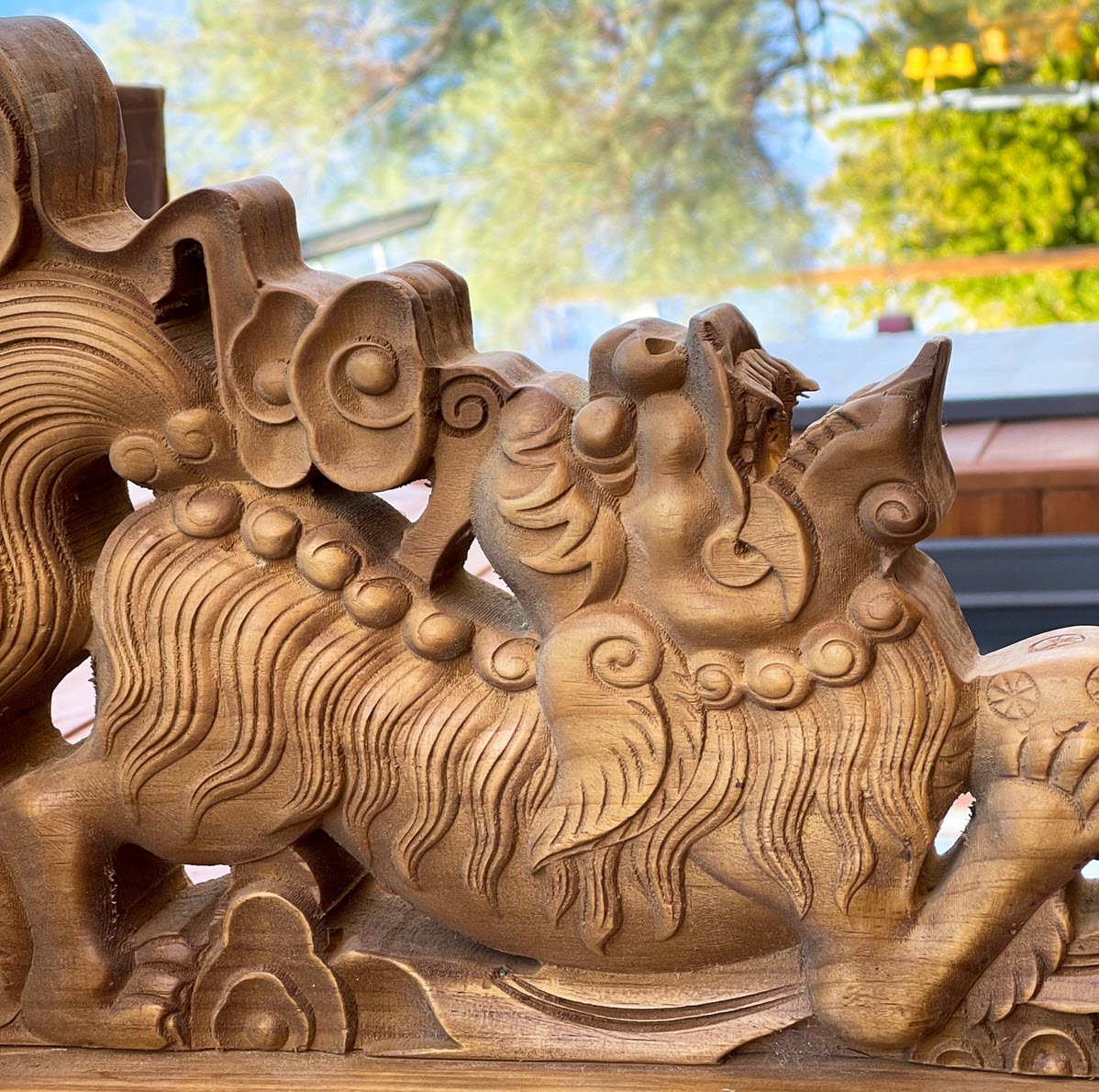
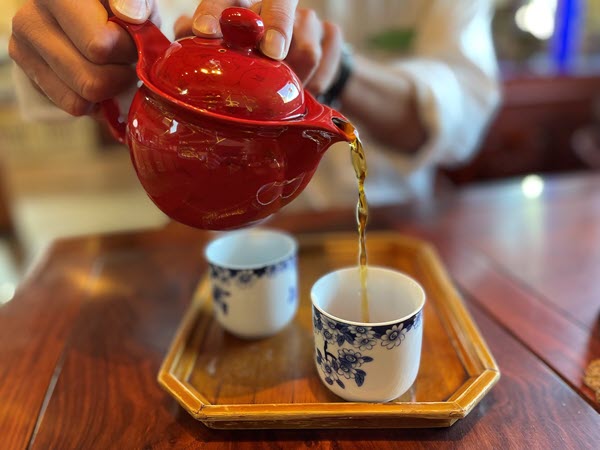
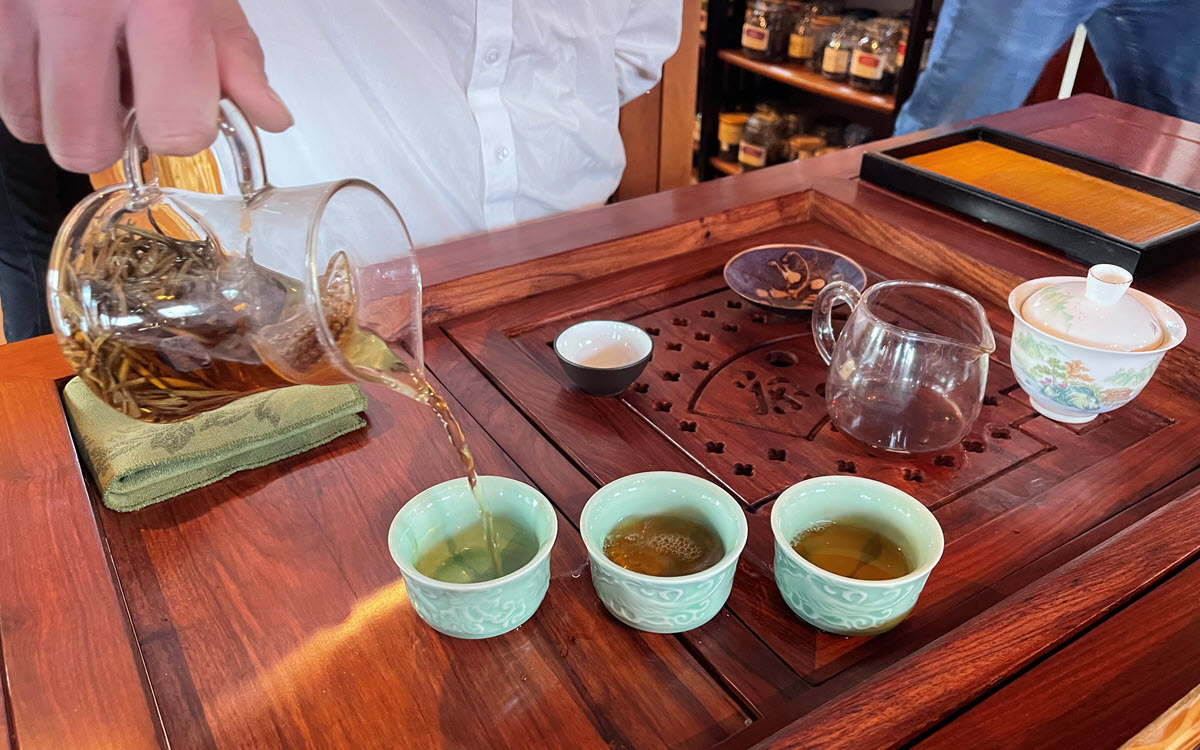
Taste of China (experiential tasting)
Discover the wonders of Chinese tea as you taste a selection of high-quality teas featuring different origins and processing methods. Learn about different types of tea and their traditional health benefits. Great for parties and special events (baby showers, client/employee events, birthday parties, graduation parties, cultural experience days, etc.). Light snacks will be served with tea (1 snack per person included in the price).
Cost: $18 per seat (minimum 6 seats, maximum 30 seats per event, no child pricing), 18% minimum gratuity not included
Length: up to 90 minutes.
— Seven Cups Fine Chinese Tea
Link to share this post with your colleagues
Signup and receive Tea Biz weekly in your inbox.
